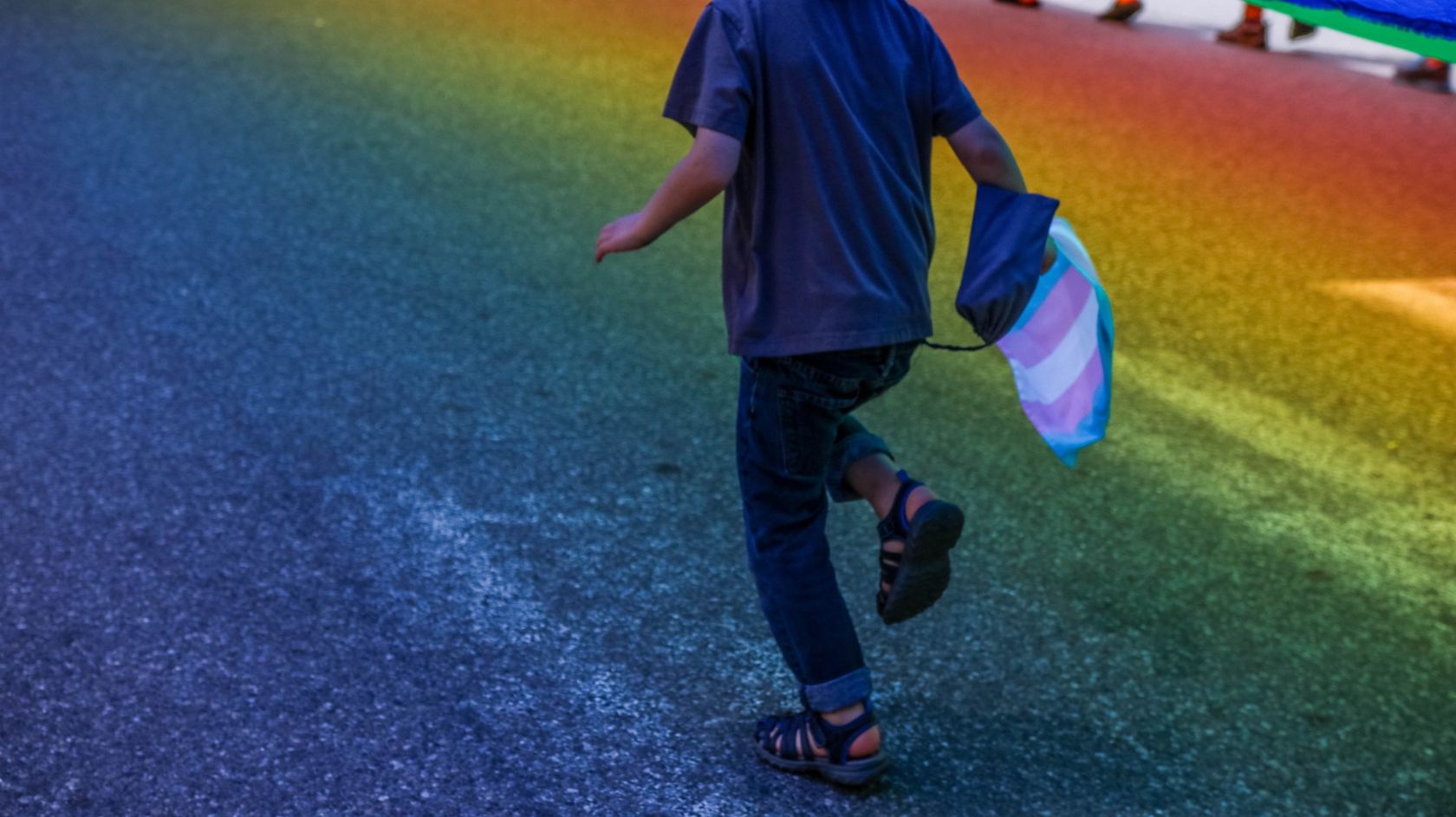Adolescence is a critical time of growth, self-discovery, and, unfortunately, significant challenges. Some teens struggle with behavioral issues, emotional regulation, mental health disorders, and unhealthy coping mechanisms that interfere with their daily lives. When...
Recent Posts
After Residential Treatment: Helping Teens Transition Back Home
Residential treatment can be life-changing for a teen struggling with mental health, trauma, or behavioral challenges. But what happens after your child returns home? The transition back to daily life is a critical period — one that requires patience, structure, and...
How Residential Treatment Supports Teens with Co-Occurring Disorders
Navigating adolescence is challenging enough, but for teens grappling with co-occurring disorders, the journey can feel insurmountable. Co-occurring disorders, also known as dual diagnoses, refer to the presence of two health disorders occurring at the same time....
A Parent’s Guide To Navigating Grief In Teenagers
Grief is a complex emotion that can be challenging for teens to navigate. According to the Childhood Bereavement Estimation Model (CBEM), 1 in 12 children and teens in the U.S. will experience the death of a parent or sibling by age 18. While grief is usually...
How Long Is Residential Treatment for Teens?
If your child is about to begin a stay at a residential treatment center, you’re bound to have a lot of questions. What types of therapy will be involved? Will our family be allowed to visit? And, of course, how long is a teen residential treatment program? In this...
Is Residential Treatment Considered Inpatient or Outpatient?
If you’ve never engaged with residential treatment centers before, it’s common to ask: is residential treatment considered inpatient or outpatient? Well, the answer is simple: our residential teen treatment centers are considered inpatient because teens stay at our...
Benefits of Residential Treatment for Teens: When to Choose It Over Other Treatment Programs
When seeking help for your teen, it’s important to know the benefits of residential treatment teens can take advantage of. For teens suffering from mental health disorders, behavioral disorders, psychological disorders, or addiction issues, there are a variety of...
Does Insurance Cover Teen Residential Treatment?
How Much Does Residential Treatment Cost? Cost of Residential Treatment The cost of residential treatment varies between each Residential Treatment Center (RTC). It may range from free (which is very uncommon) to tens of thousands of dollars per month. And if you are...
3% of Teens Identify as Transgender or Gender Nonconforming in America
How Many Transgender Teens Are There? Approximately 150,000 American teens (ages 13 to 17) identify as transgender in the United States today. Of course, there is no general age in which people typically “discover” or “come out” as transgender. Nonetheless, more and...
Recognizing Signs of Teen Depression: A Guide for Parents
It is very common for children and adolescents to experience occasional moodiness or periods of sadness. The causes of teen depression are multifaceted, involving biological, environmental, and social factors such as bullying, mental health conditions, stressful life...
Distinguishing Between Signs of Depression or “Moodiness” in Teens
Parents often wonder how to distinguish normal teenage mood swings and rebellions from actual symptoms of depression. Fortunately, there are several ways to tell. As many as 1 in 5 teenagers will experience depression at some point during adolescence. Unfortunately,...
Social Anxiety Disorder in Teens: Signs, Symptoms, and How to Help
What is Social Anxiety Disorder? Social anxiety disorder (SAD) affects 1 out of 3 adolescents between 13 and 18 years old. Over 19 million people across America suffer from social anxiety disorder (SAD) today, including a significant number of young adults. It is...
Teen Depression Prevention: Parent, Friend, and Support Tips
At any given time, one out of every five teenagers is experiencing major depression. If you are a parent to an adolescent or teenager, you are likely familiar with the moodiness inherent to this age group. Mood swings are common, as teens are experiencing a vast...
How to Talk to Your Teen About Depression
Teen depression is more common — and more serious — than many parents realize. While emotional ups and downs are a normal part of adolescence, persistent sadness, irritability, or withdrawal may point to something deeper. Knowing how to talk to your teenager about...
Managing Expectations With Teens
As a parent of an adolescent, teen, or young adult, your attitudes, actions, and beliefs can have a tremendous impact on your child’s well-being. Your teen is experiencing the challenging process of transitioning from childhood to adulthood. As someone who has gone...
5 Grounding Techniques for Adolescents With Anxiety Disorder
Tips for Overcoming An Anxiety Attack: PTSD Grounding Exercises
Raising a teen with an anxiety disorder can feel like a constant struggle. As a parent, you may be facing some extraordinarily difficult moments and may be unsure of how to effectively approach this complex, widely varying mental disease. Anxiety disorders also include panic disorder and post-traumatic stress disorder, typically causing a person to feel disoriented from reality. These attacks are triggered when an individual has a mental flashback of a traumatic event or has encounters a similar experience that triggers a past trauma. Fortunately, there’s immediate help. By employing timely countermeasures and adopting new grounding exercises for PTSD, you can help keep your child grounded in the event of a panic attack.
Grounding techniques typically fall within two major categories of awareness: sensory and cognitive. The use of said techniques will help reorient your teen to the here and now, allowing them to manage any intense anxiety or overwhelming feelings in a calming, productive way. Next time your loved one is faced with an untimely anxiety attack, take a few minutes, and try to implement a few of these exercises to help them regain mental focus.
Examples of Sensory Awareness Grounding Exercises
One of the most popular grounding methods can be accomplished by tracing your hand on a piece of paper. After tracing is complete, start by labeling each finger, using the names of the five senses. Take each labeled finger and associate a symbol related to the sensory feature. For instance, you may use the index finger to represent the sense of touch. In this case, you could use the symbol of a furry puppy or kitten to label touch.
After completing this step and labeling each finger appropriately, place the hands/fingers in an obvious location somewhere in the house, such as the door of your refrigerator. This ensures your child will easily be able to see and associate the image, making it easier for memorization. Whenever anxiety is triggered, instruct your child to take slow, deep breaths. Then, ask him or her to put their hand in front of his face and stare at it, looking at each finger and remembering the symbols associated with the exercise from memory.
The 54321 Game
The 5,4,3,2,1 game is another effective coping strategy for managing a panic attack.
Begin by asking your child about objects in the immediate surrounding area:
- Name five things you can touch in this room. Touch can be done with your hands or even feet.
- Name four things you can see.
- Name three things you can smell.
- Name two things you can hear.
- Name one good food you like to eat.
The answers provided will give you an idea of the current state of mind and level of anxiety.
In the final sensory exercise, you could ask your child to maintain sight and focus on his surroundings while taking care to notice the details. Ask them to hold a ball, a stuffed doll or a pillow. Then, ask the child to focus on your voice or listen to a neutral conversation (even the TV works). Another effective technique that many caregivers often use simply involves letting the patient to listen to soothing music, or focusing on lyrics to a song.
Cognitive Awareness Exercises & Grounding Techniques:
Cognitive awareness techniques involve mental cognition and are typically structured in the form of questions.
To get started, ask your child a series of questions related to the immediate surroundings.
This will help to re-orient your child in the current place and time. For instance, you could ask:
- What day is today?
- What season is it?
- What is the date?
- How old are you?
- What month is it?
- Where are you?
- What year is it?
Other grounding exercises can be done in isolation rather than in groups of related tasks.
Examples of these exercises can be found below:
- Ask the teen to stomp his feet firmly into the ground. This will remind him or her of where they are.
- Let them put a rubber band on their wrist. Allow them to pluck it the rubber band and feel the small pain or sting on their skin.
- If the child is sitting, ask them to stand. If they are standing, ask them to sit. The patient should focus on the change in movement. This will remind then that they are in control.
- Tell them to visualize a big red STOP sign. It could symbolize an effort to stop the traumatic memory.
- Ask your teen to make a list of items they see or feel in the house. What room are they describing?
- Allow them to take a walk outside. Ask your child to take note of the things he/she sees, such as houses. How many are there?
- Give them their favorite video game to play or let them watch their favorite TV show.
- Let them engage in physical exercise, such as bike riding.
With these exercises, you will have some basic tools to choose from in the event your loved one is suffering from an anxiety attack.
Above all, it is critical to seek the proper treatment and in most cases, medical care if your child is experiencing severe anxiety attacks.
If you or your loved one suffers from an anxiety disorder, please contact our residential treatment team at Polaris Teen Center.
We specialize in helping troubled youth and adolescents effectively manage their anxiety, to live happy, fulfilled, productive lives –
To speak with an admissions specialist or to learn more, contact us.
[ratings]
Polaris Teen Center is a residential treatment facility for teens and adolescents suffering from severe mental health disorders. Our highly accredited facility is fully licensed and certified in Trauma Informed Care and is a part of the Behavioral Health Association of Providers (formerly AATA).
Previous Post
Next Post
Related Posts
A Parent’s Guide To Navigating Grief In Teenagers
Grief is a complex emotion that can be challenging for teens to navigate. According to the Childhood Bereavement Estimation Model (CBEM), 1 in 12 children and teens in the U.S. will experience the death of a parent or sibling by age 18. While grief is usually...
How Long Is Residential Treatment for Teens?
If your child is about to begin a stay at a residential treatment center, you’re bound to have a lot of questions. What types of therapy will be involved? Will our family be allowed to visit? And, of course, how long is a teen residential treatment program? In this...
Benefits of Residential Treatment for Teens: When to Choose It Over Other Treatment Programs
When seeking help for your teen, it’s important to know the benefits of residential treatment teens can take advantage of. For teens suffering from mental health disorders, behavioral disorders, psychological disorders, or addiction issues, there are a variety of...
Does Insurance Cover Teen Residential Treatment?
How Much Does Residential Treatment Cost? Cost of Residential Treatment The cost of residential treatment varies between each Residential Treatment Center (RTC). It may range from free (which is very uncommon) to tens of thousands of dollars per month. And if you are...
3% of Teens Identify as Transgender or Gender Nonconforming in America
How Many Transgender Teens Are There? Approximately 150,000 American teens (ages 13 to 17) identify as transgender in the United States today. Of course, there is no general age in which people typically “discover” or “come out” as transgender. Nonetheless, more and...
Recognizing Signs of Teen Depression: A Guide for Parents
It is very common for children and adolescents to experience occasional moodiness or periods of sadness. The causes of teen depression are multifaceted, involving biological, environmental, and social factors such as bullying, mental health conditions, stressful life...
Distinguishing Between Signs of Depression or “Moodiness” in Teens
Parents often wonder how to distinguish normal teenage mood swings and rebellions from actual symptoms of depression. Fortunately, there are several ways to tell. As many as 1 in 5 teenagers will experience depression at some point during adolescence. Unfortunately,...
Social Anxiety Disorder in Teens: Signs, Symptoms, and How to Help
What is Social Anxiety Disorder? Social anxiety disorder (SAD) affects 1 out of 3 adolescents between 13 and 18 years old. Over 19 million people across America suffer from social anxiety disorder (SAD) today, including a significant number of young adults. It is...
Teen Depression Prevention: Parent, Friend, and Support Tips
At any given time, one out of every five teenagers is experiencing major depression. If you are a parent to an adolescent or teenager, you are likely familiar with the moodiness inherent to this age group. Mood swings are common, as teens are experiencing a vast...








